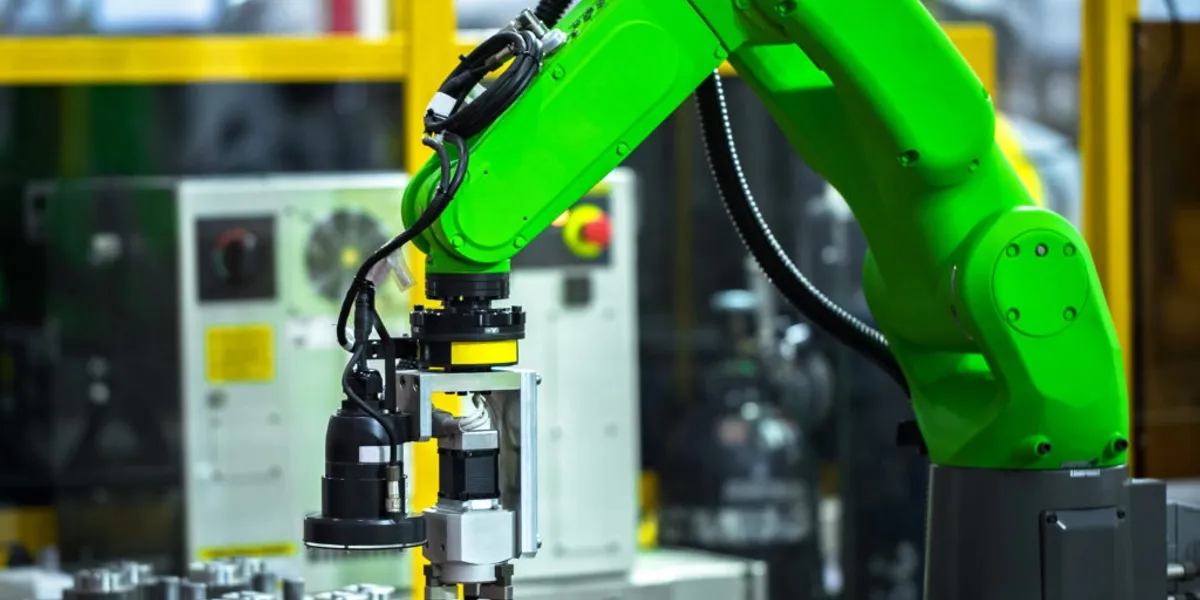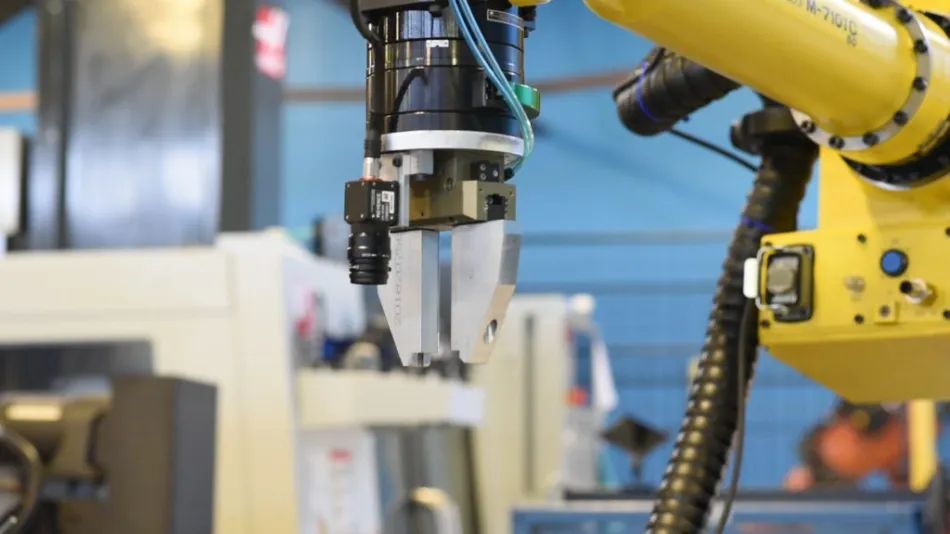High Mix Manufacturing - Simplified with Task Canvas Blocks

With a revolution in robot programming coming in the form of easy to use collaborative and industrial robots, more machine shops are taking on automation projects.
With a revolution in robot programming coming in the form of easy to use collaborative and industrial robots, more machine shops are taking on automation projects. Although some of the initial setup and programming becomes much easier, the problems with integrating configuring and programming these peripheral devices still persist.
READY simplifies the processes of integrating the robot with those peripheral devices. READY makes the process of programming the entire task easy enough that anyone on the factory floor can do it. Using Forge/OS, a cross platform automation operating system, it enables anyone to configure and control all aspects of the automation cell no matter the brand of robot or peripheral.
High Mix using Forge/OS
Automation can be difficult to justify In a high mix manufacturing environment. When a machine runs a wide variety of parts, the automation needs to be just as versatile. Many machinists are accustomed to adjusting features of the job to get the best result. Commonly machinists often modify parameters in the CAM software and changing tooling on the machine depending on the job. Robots traditionally don’t work the same way. During changeover it can be complicated and difficult to modify a program or change a peripheral. This can lead to the potential loss of time due to the lack of knowledge and skill in robot programming.
Forge/OS vastly simplifies the changeover process in a high mix environment. Automation becomes much more accessible utilizing Task Canvas, the flowchart programming application. In Task Canvas each action is controlled by a block that has customizable control built in. We’re going to look at a few blocks within Task Canvas that will simplify changeover.
Camera Block
The Camera Block can be a great solution for a high mix manufacturing environment. Vision systems have a wide variety of uses, most often allowing the robot to locate parts within the workspace. The camera is programmed in the vision system’s native software. This is used to locate the part specified in the software and give the robot a point in space to grasp the part.
READY makes these vision systems much more useful with the Camera Block. In Task Canvas these blocks are used to send and receive signals from the vision systems controller after the camera takes the image. When part changeover happens the vision system will need to be updated for the new part, but the blocks and the logic in Task Canvas stay the same. This vastly reduces the time it takes to change to a new part.
Grid Block
The grid block lets the robot to move the end effector (end of the robot) from one position to another following a customization grid pattern. Since the camera is mounted to the end of the arm, the vision system can be programmed to take an image every time it gets to another point in the grid. With only creating 3 waypoints and changing a few parameters, the robot can continuously scan for parts on the work surface, and even alert the operator if the parts need to be refilled.
Gripper Block
Once you can locate the parts using the grid move and camera blocks its time to pick the part up. In this high mix environment your parts will change so your gripper will need to be just as flexible. The gripper block will allow you to control a gripper no matter the actuation type. If you have a suction gripper or an electric gripper they both are programmed the same way. This vastly opens up the possibilities in your manufacturing space. If your parts change you can easily modify the program to accommodate the parts. If the parts are different enough, the gripper can be changed and the program can be updated in minutes.
Check out our video that puts these principles into action.
Forge/OS can help boost your production by simplifying the difficult parts of automation. Using the blocks built into Task Canvas anyone in the shop can learn and master automation

